3 Mega TBMs to Build Mumbai – Ahmedabad HSR Line’s Tunnel
Achal Khare – the Managing Director of the National High Speed Railway Corporation Limited has revealed in an interview that the contractor for the 21 km underground section of the 508 km Mumbai – Ahmedabad High Speed Rail line will be required to deploy three tunnel boring machines (TBMs) with a cutterhead of “roughly 14.5 meters” in diameter.
The diameter of TBMs deployed for metro tunnels in India have so far ranged between 6.45m to 6.68m, while four TBMs with a diameter of 10m have previously been deployed for water tunnels across two projects (first, second) in Andhra Pradesh and one project in Madhya Pradesh.
With a diameter larger than 14 meters, the three new TBMs for the HSR line will easily classify as “Mega TBMs” which have mostly been deployed to build highway tunnels around the world. Tunnel Talk has a brilliant table listing out all such mega machines – their manufacturer, type and diameter deployed since 1994.
Once built, the single tunnel bored by these TBMs between Vasai Creek (north of Thane) and Bandra Kurla Complex in Mumbai will be large enough to include tracks for both the up-line and down-line.
Interview –
Other tidbits from the interview –
• Roughly 3 km of the 21 kms will be built using the New Austrian Tunneling Method (NATM), which has previously been used for Delhi (see example 1, example 2) and Bangalore (see example) metro projects.
• Indian construction firms can bid independently, and will not be required to form a consortium/joint venture with foreign firms.
• Ahmedabad – Vadodara section will be built by a Japanese contractor (By this, I’m assuming he meant Indian firms would be required to form a JV with Japanese firms to become eligible for bidding)
• Confirmation of the line getting divided into 7 civil packages, with one package for the construction of the southern terminal station at Mumbai’s Bandra Kurla Complex (BKC), another one for the 21 km Thane – BKC tunnel, and the rest 5 for the elevated corridor between Thane and Sabarmati in Ahmedabad.
In a separate and more in-depth interview with Doordarshan, Achal Khare mentions the TBMs will be lowered via 3 launch shafts.
To give you an idea of the three new TBMs’ size, here’s a similar sized Mitsubishi TBM, with a diameter of 15m, deployed for building one of two tunnels for Madrid’s M30 highway in 2005 –
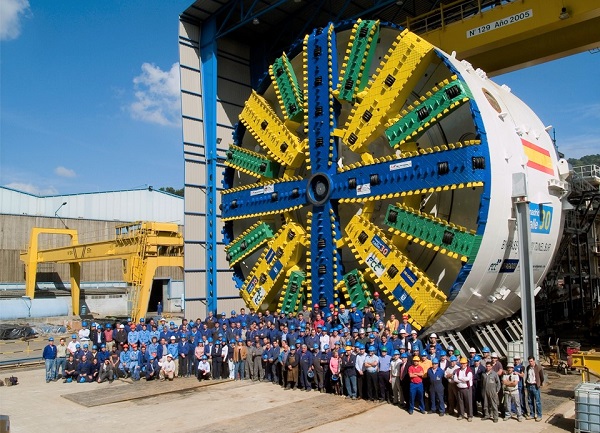
Photo Copyright: MHI
And here’s a look at TBM Bertha – the most popular (and infamous) Mega TBM in recent history, which was manufactured by Hitachi-Zosen with a diameter of 17.4m for Seattle’s SR99 highway project –
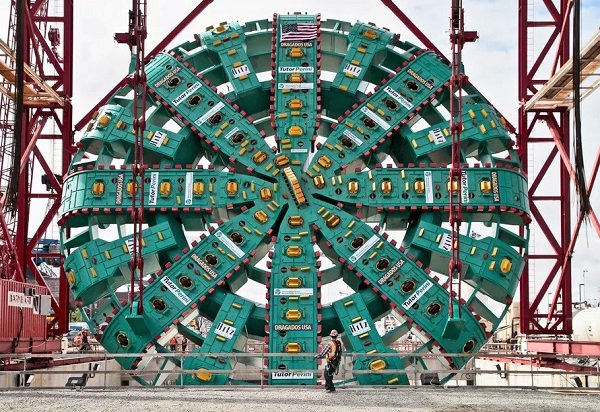
Bertha’s cutterhead getting lowered in 2013 – Photo Copyright: Inverse
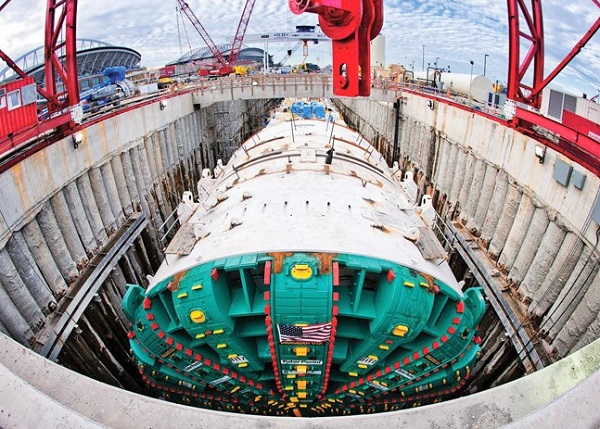
Ready to dig in 2013 – Photo Copyright: Tunneling Online
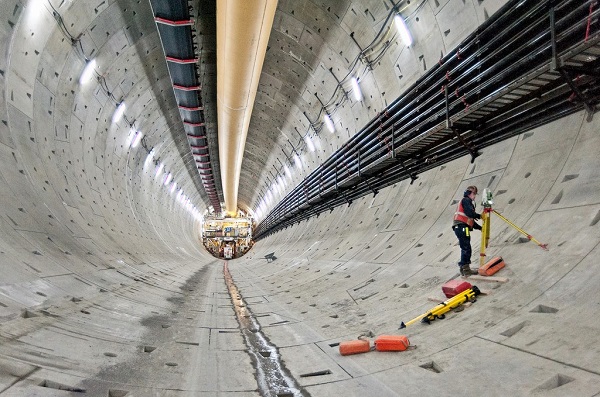
Tunnel built by Bertha – Photo Copyright: Arch Paper
Land acquisition for the project has just commenced, and the NHSRCL plans to invite tenders for the line’s construction only after a significant portion (two-thirds) of all land is acquired.
For more updates, check out the High Speed Rail section of The Metro Rail Guy!
– TMRG
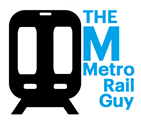


Unfortunately these mega TBMs will be serviced during construction with pneumatic-tyred “Multi Purpose Vehicles” (MPV) fetching the segment ring build sets, the soil conditioning, pea gravel grouting supplies and man-riding duties up to the trailing back-up gantries of these massive machines. Unlike the metro tunnels where rail-bound construction railways are used for these supply duties in the smaller diameter tunnels, the MPVs will trundle directly on the raw concrete ring surfaces without the guiding benefit of rails, there being plenty of interior room to allow for those bigger vehicles to maneuver.
-PGG-
Besides moving unevenly, are there any other drawbacks?
Perhaps not, economics I guess. I am interested in the tunnel construction railways with the use of tunnel locomotives. In Spain on the M30 road tunnels in Madrid they did use locomotives (Schöma CHL350-BB), but this was almost the last use of such in the really big diameter tunnels, mostly MPVs since then.
-PGG-
1.Why Mega TBM and not normal TBM? I guess the Bullet trains width would not be more than 3.2 m, which Delhi metro already uses.
2.As far as calculations go, 14.5 m diameter TBM will dig greater volume than 6.5-7 m diameter TBM, so the costs would increase and also the TBM will be costlier than normal TBM
Moreover the cost would be higher.
Good questions – this will leave an awful amount of empty space. I’m curious to see the feasibility report’s rationale behind this.
It is for the same reason, I believe, as the Trains are going through Thane and the same reason why One Tunnel not Two. In Future, they want to extend it towards Pune, Banglore, Chennai. So they may increase the Number of Tracks from Two to Four in the same Tunnel.
Emergency tunnels, maybe a road, future additions to the number of passenger tracks, high speed freight tracks?
When will the civil work start bullet train
Am not expert but two high speed trains crossing at speed can create Air wavefront which creates sounds at exit, maybe that is reason they want to have bigger diameter.I guess.
The bullet trains are much taller then the metro trains. I have travelled in double decker bullet trains in Tokyo. I also think they are a bit wider then the standard metro coaches. The wheels are also bigger due to the speeds at which they travel. And with the overhead electric equipment I think it is more to do with height then anything else.
The Shiziyang underwater Tunnel in China for high speed line from Guangzhou to Shenzhen also used a large tunnel boring machine with diameter of 11.2 m.
http://www.nfm-technologies.com/newsletter/english/newsletter1-eng.pdf
A single mega tunnel will house both upline and downline, so two tunnels aren’t required. This is more cost-effective than digging two tunnels, even of smaller size. However, this brings me to another question – why isn’t this done for Metro rail tunnels too – assuming this is more cost effective.
Using 6.5m TBM will require twin tunnel, hence more no of TBMs, also air pressure nd SOD requirements are higher as compared to metro. On the other hand one bigger dia TBM is recommended in high speed rail.
Hey, won’t these massive and humongous TBMs cause a hell lot of inconvenience to the nearby residents? Won’t we be hearing in this newspapers everyday of people’s complaints of disturbances caused by this and even some old and dilapidated buildings (some even from British era) collapsing or developing cracks? And. By the way, when is this tunneling starting?
With 25 to 30 metre of earth over the tunnel, what noise is expected. Soil will muffle all construe sound.
When will the civil work start bullet train
we are service provider and dealer for all types of hydraulic pump & hydraulic motors and we also provide best deal for hydraulic motors and pump like rexroth,Kawasaki,KPM,Linde,Nachi,parker,Daikin etc